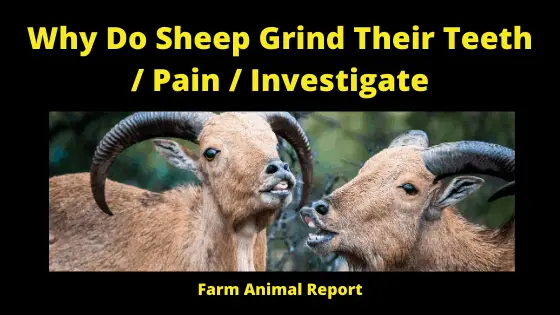As a general rule sheep grind their teeth for some of the following. 1) Pain 2) Mastitis 3) Tail Docking 4) Castration 5) Mulesing 6) Stress 7) Scrapie 8) Enterotoxemia
Why Do Sheep Grind Their Teeth
Why Do Sheep Grind Their Teeth – Suppose you will see that your sheep are grinding their teeth. It is not a good sign for your sheep herd. It will be dangerous. If you feel this situation, then you should guess that your sheep have been suffered from disease or pain. Due to this way, recognized the pain and give relief.
- Hoof Injuries
- Mastitis
- Tail-Docking
- Castration
- Mulesing
- Stress – Nutritional – Pregnancy
- Enterotoxemia
- Scrapie
How can you Assess the Pain in the Sheep Herd?
Pain is major welfare, issue and sheep may experience pain as a result of several medical conditions, hoof injuries, and mastitis being the most important ones. Some husbandry practices, such as tail-docking and castration, which are carried out in several countries, are also painful. Mulesing ( cutting wool-bearing and wrinkled skin from the perineal region and adjoining hindquarters of sheep) is done in Australian Merino sheep to prevent flystrike and is painful. Painful husbandry practices will be covered in a forthcoming fact sheet dealing with the treatment of pain in sheep.
Pain management in sheep is often inadequate, and one of the reasons given by veterinarians for not administering analgesics to sheep in pain is the alleged difficulty to identify and assess pain in this species. Therefore, having valid, reliable, and feasible indicators of pain in sheep will significantly contribute to better pain treatment and may increase awareness of pain as a major welfare issue among veterinarians and producers.
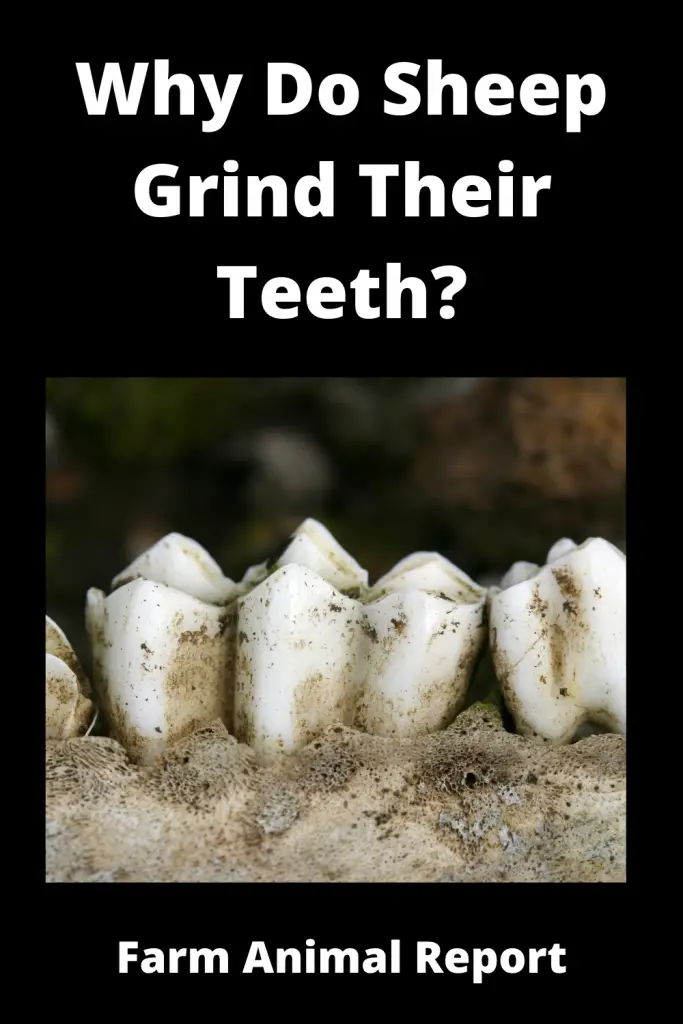
Pain can be assessed using behavioral and physiological indicators. Physiological indicators include hyperalgesia and plasma concentration of cortisol and acute-phase proteins. Hyperalgesia is an increased pain response to a noxious stimulus and can be measured by applying a mechanical stimulus that increases gradually in pressure until the animal responds by moving. Although widely used in research, physiological indicators that are measured in the blood are not feasible in field conditions and will not be discussed in this fact sheet.
Pain assessment tools rely mainly on global changes in behavior, as they are sensitive and non-invasive indicators of pain. Recently changes in facial expression are very useful. Additionally, scoring systems for mastitis and lameness are also available to be used in sheep.
General Changes in Behaviour:
Behavioral changes such as lip curling, trembling, vocalization, and abnormal postures have been described in lambs undergoing tail-docking or castration. In general, sheep in pain may show the following signs:
- Reduced feed intake and rumination.
- Licking, rubbing, or scratching painful areas.
- Reluctance to move.
- Grinding their teeth and curling their lips.
- Altered social interactions.
- Change in a posture to avoid moving or causing contact with a painful body area.
Facial Expression:
Facial expression scoring system for pain assessment has been developed for a variety of species including laboratory rodents, rabbits, and horses. These systems are valid and reliable indicators of pain severity in animals, and they require minimal time.
More recently, a sheep pain facial expression scale (SPFE) has been developed. SPFE can identify sheep suffering pain caused by mastitis or foot-rot, inter-observer reliability was very helped, and minimum training was required. The authors concluded that SPFE offers a reliable and effective method of assessing pain in sheep after minimal training.
The SPFE includes five traits, each being scored as 0 (not present), 1 (partially present), or 2 (present):
- Orbital tightening: if you will your sheep are doing orbital tightening then they are feeling pain. Orbital tightening is a closing of the palpebral fissure by the eyelids and a narrowing of the eye aperture.
- Check to tighten: there is a more convex shaping to the cheek in the area of the masseter muscle.
- Abnormal ear posture: ear becomes fully rotated ventrally and caudally.
- Abnormal lip and jaw profile: the jaw profile appears straight to concave.
- Abnormal nostril and philtrum shape: a V shape between nostrils apertures is present.
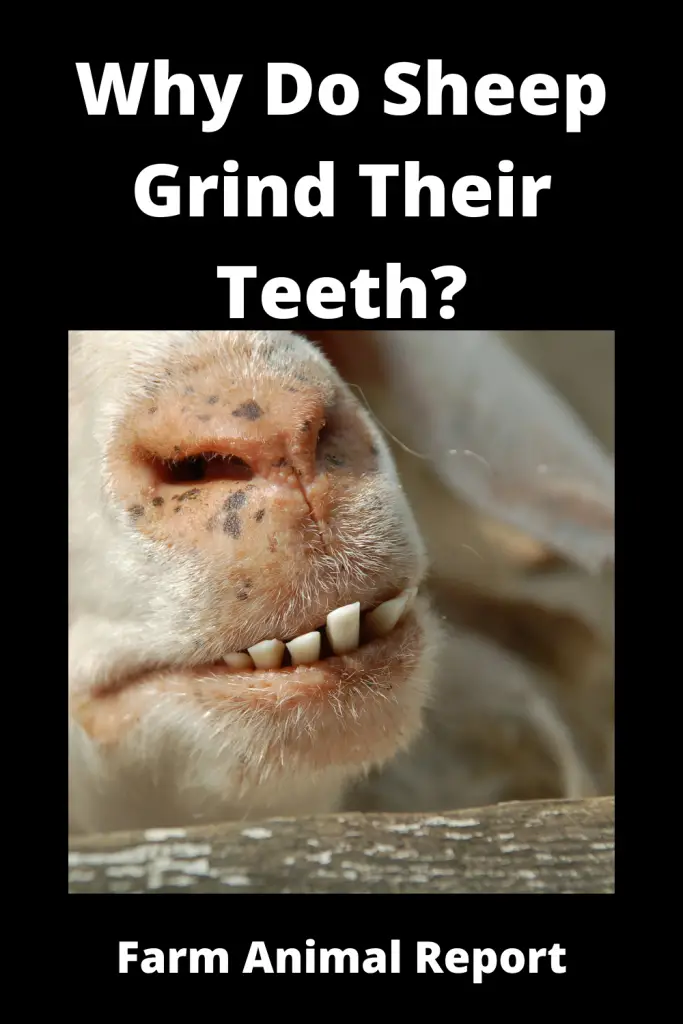
Scoring lameness:
Lameness refers to an abnormality of movement and is particularly moving. Lameness is a common problem in sheep, and infections of the hoof cause most cases of lameness. Lameness indicates that sheep are feeling pain, and several studies have shown that lameness causes hyperalgesia. Lameness can be scored following a 4-point scale that takes into account the smoothness of movement, whether weight is borne equally on all four feet, presence of head bobbing, length of the stride, and reluctance to stand or move.
See Our Extensive Guide – 16 Ways to Make Money Sheep Farming
Scoring Mastitis:
Mastitis is the presence of infections in the udder of lactating ewes and causes pain and hyperalgesia. Mastitis can be assessed using a 3-point scale that takes into account the presence of lesions and lumps in the udder as well as whether redness or hardness is detected in the udder.
Sheep Grind their Teeth when they feel Stress:
Sheep will grind their teeth when they feel stress. Stress may be of any kind. It will manage stress, nutritional stress, shearing stress, etc.
Now we have a concern about how we will reduce these all kinds of stress.
How can we Reduce Nutritional Stress?
There are the following ways to reduce stress:
- Provide appropriate nutritional requirements and feedstuffs management.
- Always provide clean water to your sheep flock. Always provide clean feed to your sheep herd. If you are handling your sheep with equipment, then all are equipment should be clean.
- Administer products via the preferred routes and in the preferred location.
- Control the coccidiosis. For controlling the coccidiosis, you should always keep the bedding area of your sheep herd dry.
- Control the internal and external parasites: for controlling the external parasites, you should spray every week of insecticidal spray and should give the shot of ivermectin which is against all kinds of ectoparasites. For controlling the internal parasites, deworming should be done properly.
- Animals are healthier and more resistant to other infectious.
- Lambs grow more efficiently.
- Fewer carcass condemnation
- Lambs are more susceptible to parasites than adult sheep.
How can you Reduce Stress through the Management of Pregnancy?
- During pregnancy, you should handle the sheep as little as possible.
- When your ewes are pregnant, then you should avoid the dog’s movement towards the sheep barn.
- Avoid the visitors and traffics toward your sheep barn.
- Minimize the number of different people doing chores.
How can you Reduce Stress during Shearing?
- Select shearers who avoid cutting sheep.
- The timing of shearing should be properly managed. You should shear your sheep least a month before lambing.
- Before additional lambing feed is required during cold weather.
How can you Reduce Stress while Weaning the Ewes?
- 7 to 10 days before weaning, switch ewes on to a low-quality roughage and terminate grain feeding to the ewes.
- Maintain the ewes on low-quality roughage and avoid handling them for at least 10 to 14 days following weaning.
- If possible, bed the area where the ewes will rest heavily with straw to form a soft bed for the ewes to lay on.
How can you Reduce Stress while Weaning the Lambs?
- Do vaccinations ten days before.
- Keep them in the same environment
- Remove ewes out of sight and sound
- Don’t work lambs for a week
- Keep on the same creep diet.
- Change diet gradually after a week.
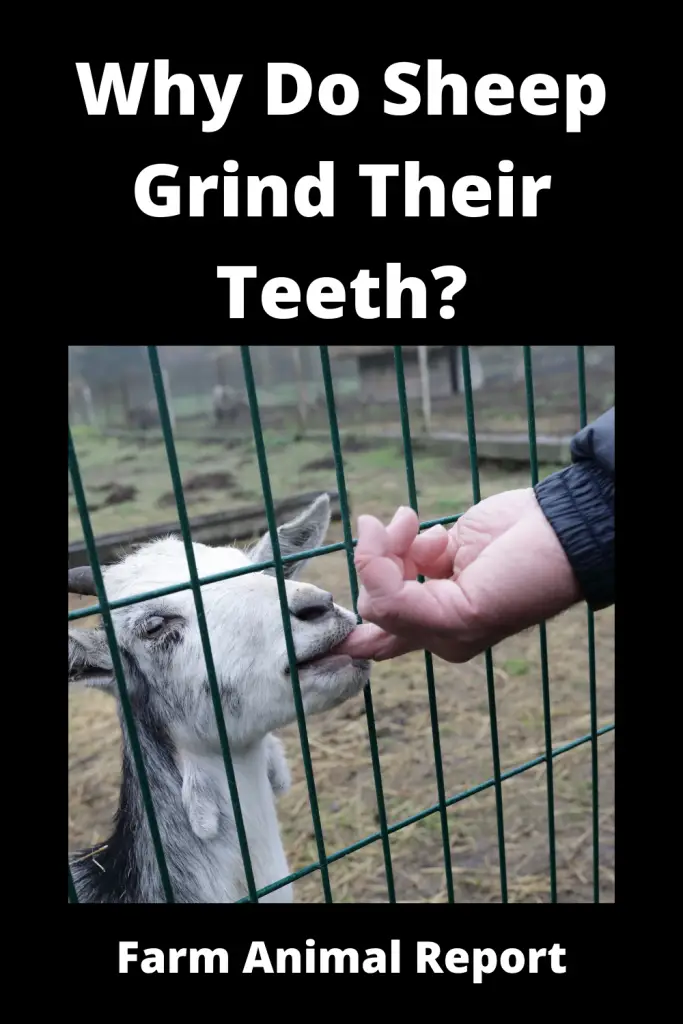
Reducing Stress while Handling the Sheep:
- Handle sheep gently and use proper management of facilities and transportation to prevent stress, bruising, and injury during animal handling.
- An understanding of sheep behavior will allow the appropriate design of facilities and equipment and result in improved ease of handling.
- Sheep have a range of vision that allows them to see behind themselves without turning their heads. They depend heavily on their vision.
- All sheep have a fight zone that can be used to an advantage when moving them. When a person enters the sheep fight zone, the animal will tend to move away.
- The lighting of handling facilities is an important fact to consider. Sheep tend to move toward light and are attracted to diffuse light.
- Sheep are very sensitive to noise. Excessive noise and confusion will cause them to balk. Sheep should be handled as quietly as is possible.
- Sheep can remember bad experiences. Therefore, well-designed facilities and humane handling should be employed from the start. Handling problems will only increase with time if improper techniques are used.
Sheep do Grind their Teeth in the Enterotoxemia:
Enterotoxemia in sheep can be fatal. It results from the sudden release of toxins by the bacteria Clostridium perfringens type D in the digestive tract of sheep. Enterotoxemia affects sheep of all ages, but it is most common in lambs under six weeks of age that are nursing heavy-milking ewes, and in weaned lambs on lush pasture or in feedlots. Creep-fed lambs and sheep being fitted for the show are often affected. Frequently, the most vigorous lambs in the flock are lost. In unvaccinated feedlot lambs, approximately 1 percent of the lamb can be expected to die from the disease, with an average of about 2 to 3 percent. In severe outbreaks, losses may range from 10 to 40 percent.
The bacteria that cause the disease normally are present in the intestine of most sheep. Under the circumstances generally brought about by heavy feeding, the Clostridium perfringens type D is absorbed through the intestinal wall. Death typically occurs within only a few hours, often before the owner observes any sick animals.
What kind of Clinical Signs will you see?
Occasionally, animals may be observed sick for a few hours before they die. Affected lambs frequently exhibit nervous symptoms, their head is drawn back, and they exhibit convulsive grinding movements of the teeth, congestion of mucous membrane of the eye, and frothing at the mouth. Also, diarrhea may be present shortly before death.
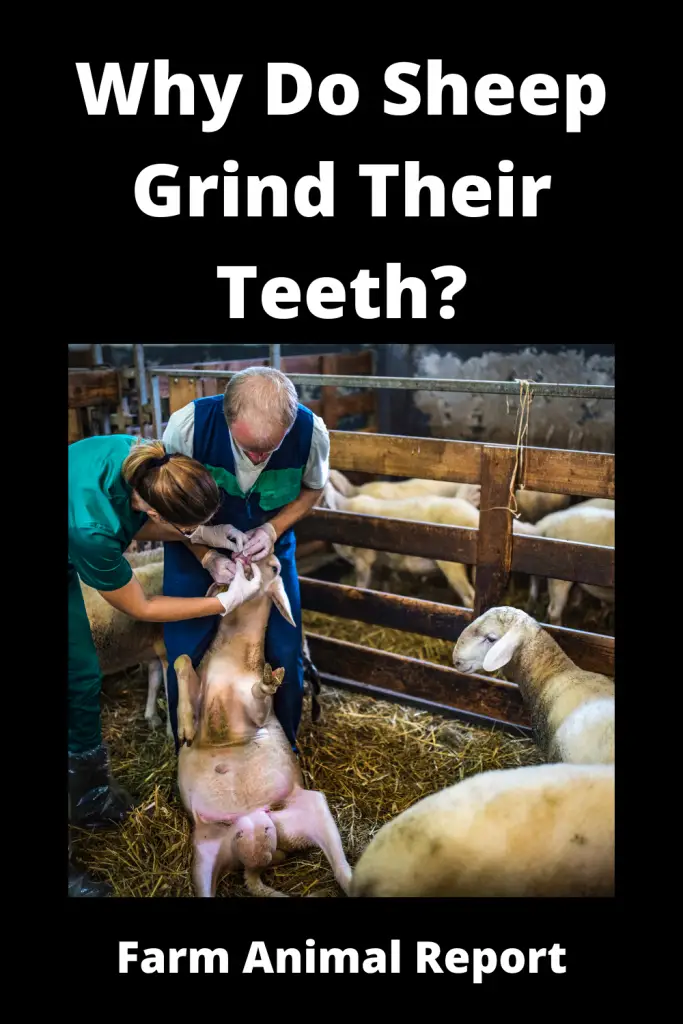
What kind of Treatment will you give during this Disease?
There is no satisfactory treatment for this affliction, but there are some preventive measures. Before placing lambs in a feedlot, vaccinate them with a clostridium perfringens type D bacteria or toxoid. Allow at least ten days after vaccination for immunity to develop. Under certain conditions, a booster shot is required two or four weeks later. Fast-gaining lambs grazing pasture or on creep feed may require vaccination at 6 to 8 weeks of age. If they continue on high-grain rations, revaccinate them after weaning. Losses may be prevented in young lambs up to 6 weeks old by vaccinated the ewe during pregnancy. Ewes that have been vaccinated previously should be vaccinated twice, two to four weeks apart, with the second vaccination administered two to four weeks before lambing. An annual booster two to four weeks before lambing is advisable.
Sheep will do Grind their Teeth during Scrapie Disease:
Scrapie is a progressive disease of sheep which affects the brain and nervous tissue. It is one of the transmissible spongiform encephalopathies having a long incubation period and is a notifiable disease in the UK.
The disease is spread at lambing time in the placental fluids, and therefore newborn lambs from an infected ewe can pick up the disease at birth. The causing agent may also be transmitted via the oral or respiratory route and possibly in feces. It has been recorded in all breeds of sheep, although some do have a higher incidence than others, this possible being due to genetic resistance or susceptibility to the disease.
Clinical Signs:
- Grinding of teeth:
A percentage of cases will grind their teeth at every opportunity and can be heard doing so from a distance. Affected sheep will grit their teeth, keeping their mouth closed and grind the teeth over and over again. Although this is thought to be a sign of pain in animals, it does not appear that scrapie cases are in constant pain, but damage to the nervous system may cause some uncontrolled discomfort. For obvious reasons sheep which grind their teeth do not eat well and lose weight.
Sheep Farming for Wool Profitability Table
| Sheep | Lambs / 3 Per Yr | Space Required 20 Sq Feet - Each | Grazing Acres .3 / Sheep | Feed Required / Yr $100 | 15 Lbs Wool / Year | Average Price $ 10 / LB Wool | Total Revenue Possible |
|---|---|---|---|---|---|---|---|
| 1 | 3 | 60 sq ft | .9 acres | $ 300 | 45 lbs | $ 450 | $ 150 |
| 2 | 6 | 120 sq ft | 1.80 acres | $ 600 | 90 lbs | $ 900 | $ 300 |
| 5 | 15 | 300 sq ft | 4.5 acres | $ 1,500 | 225 lbs | $ 2,250 | $ 750 |
| 10 | 30 | 600 sq ft | 9 acres | $ 3,000 | 450 lbs | $ 4,500 | $ 1,500 |
| 20 | 60 | 1200 sq ft | 18 acres | $ 6,000 | 900 lbs | $ 9,000 | $ 3,000 |
| 30 | 90 | 2,700 sq ft | 27 acres | $ 9,000 | 1,350 lbs | $ 13,500 | $ 4,500 |
| 40 | 120 | 4800 sq ft | 36 acres | $ 12,000 | 1,800 lbs | $ 18,000 | $ 6,000 |
| 50 | 150 | 3,000 sq ft | 45 acres | $ 15,000 | 2,250 lbs | $ 22,500 | $ 7,500 |
| 100 | 300 | 6,000 sq ft | 90 acres | $ 30,000 | 4,500 lbs | $ 45,000 | $ 15,000 |
| 200 | 600 | 12,000 sq ft | 180 acres | $ 60,000 | 9,000 lbs | $ 90,000 | $ 30,000 |
Sheep can Produce 2 - 30 lbs of wool per year depending on Breed
Raw washed Wool Runs $ 6 - $ 14 using average $ 10
Feed 5 Months Buying Hay $ 100 rest Grazing
Please Check my Numbers
Sheep Farming for Milk Profitability Table
| Sheep | Lambs / 3 Per Yr | Space Required 20 Sq Feet - Each | Grazing Acres .3 / Sheep | Feed Required / Yr $100 | Wool $ 15 lb / Year | Average Price $ 10 / LB Wool | 90 Gallon/ Yr each ewe | Price $ 30 per Gallon | Total Wool Revenue Possible | Total Revenue Milk and Wool |
|---|---|---|---|---|---|---|---|---|---|---|
| 1 | 3 | 60 sq ft | .9 acres | $ 300 | 45 lbs | $ 450 | 270 | 8100 | $ 150 | 8,250 |
| 2 | 6 | 120 sq ft | 1.80 acres | $ 600 | 90 lbs | $ 900 | 540 | 16,200 | $ 300 | 16,500 |
| 5 | 15 | 300 sq ft | 4.5 acres | $ 1,500 | 225 lbs | $ 2,250 | 1350 | 40,500 | $ 750 | 41,250 |
| 10 | 30 | 600 sq ft | 9 acres | $ 3,000 | 450 lbs | $ 4,500 | 2700 | 81,000 | $ 1,500 | 82,500 |
| 20 | 60 | 1200 sq ft | 18 acres | $ 6,000 | 900 lbs | $ 9,000 | 5400 | 162,000 | $ 3,000 | 165,000 |
| 30 | 90 | 2,700 sq ft | 27 acres | $ 9,000 | 1,350 lbs | $ 13,500 | 8100 | 243,000 | $ 4,500 | 247,500 |
| 40 | 120 | 4800 sq ft | 36 acres | $ 12,000 | 1,800 lbs | $ 18,000 | 10,800 | 324,000 | $ 6,000 | 330,000 |
| 50 | 150 | 3,000 sq ft | 45 acres | $ 15,000 | 2,250 lbs | $ 22,500 | 13,500 | 405,000 | $ 7,500 | 412,500 |
| 100 | 300 | 6,000 sq ft | 90 acres | $ 30,000 | 4,500 lbs | $ 45,000 | 27,000 | 810,000 | $ 15,000 | 825,000 |
| 200 | 600 | 12,000 sq ft | 180 acres | $ 60,000 | 9,000 lbs | $ 90,000 | 54,000 | 1,620,000 | $ 30,000 | 1,650,000 |
Sheep can Produce 1/2 Gallon Milk per day / 180 Day Lactation
Raw Sheep Milk $9 - $25 per Quart - Used $ 30 per Gallon for Table
Feed 5 Months Buying Hay $ 100 rest Grazing
Please Check my Numbers
18 Breeds of Hair Sheep FAQ Table
| Hair Breeds of Sheep | Country Origin | Purpose of Breed | Use | Ewe Weight |
|---|---|---|---|---|
| Katahdins | Caribbean / Maine / Africa | To Graze Power lines / instead of Chemicals | Meat | 120 - 160 lbs |
| Dorper | South Africa | Thrive in Africa / Hot Climate | Meat / Fast Growing | 230 LBs |
| Blackbelly | America | Hot Climates | Meat | 150 LBs |
| St. Croix | Carribean | Came on Ships for Meat for sailors | Meat | 150 lbs |
| Romanovs | Russia | Primarily for Meat | Meat Wool - Double Coated | 110 lbs |
| Blackhead Persian | Africa / Somaila | Bred for High Quanity of Fat | Meat | 120 lbs |
| West African Dwarf | South / Central Africa | Meat | 55 lbs | |
| Red Maasi | East Africa | Bred for Hardiness and parasite Resistance | Meat | 77 Lbs |
| Wiltshire Horn | England | Do not suffer from Flystrike | Meat | 149 lbs |
| Royal White | United States / Texas | Bred for Tender Meat and Disease Resistants | Meat | 175 lbs |
| California Red | Not completely Hair sheep/ Combination of both/ Prod 2 lambs Yr | Meat | 140 lbs | |
| Damara | Egypt | Vigorous with fast growing / in extreme conditions | Meat | 110 lbs |
| Pelibuey | Cuba / Mexico | Tropical Sheep | Meat | 75 lbs |
| Africana | Columbia / Venezula | Meat | 110 lbs | |
| Morada | Brazil | Survive Scrub | Meat | 66 lbs |
| Brazillian Somaila | South Africa / Somali | Meat | ||
| Uda | Africa | Long Legged Sheep | Meat | 88 lbs |
| Touabire | Africa | Dairy / Meat | 77 lbs |
Minature Breeds of Sheep
| Breed | Height | Weight / Full Grown | Food Per Day | Lifespan | Wool / Hair Sheep | Cost |
|---|---|---|---|---|---|---|
| Quessant Sheep | !8" | 28 - 30 Lbs | 1/2 - 1lb | 10 - 12 Yrs | Wool | $ 350 - 450 |
| Baby Doll Southdown | 18" | 75 lbs | 2 - 3 Lbs | 10 - 12 Yrs | Wool | $ 350 -450 |
| Southdown Sheep | 18" - 24" | 130 lbs | 6 - 6 lbs | 10 - 12 Yrs | Wool | $ 180 - $ 600 |
| Cheviot Sheep | 20" | 130 Lbs | 6 - 6 lbs | 10 - 12 Yrs | Wool | $ 180 - $ 600 |
| Border Cheviot | 20" | 130 lbs | 6 - 6 lbs | 10 - 12 Yrs | Wool | $ 180 - $ 600 |
| Shetland Sheep | 24" | 75 - 100 lbs | 6 - 6 lbs | 10 - 12 Yrs | Wool | $ 50 - $100 |
| Navajo - Churro | 20" | 110 lbs | 6 - 6 lbs | 10 - 12 Yrs | Wool | $ 200 |
Amount of Food they Need
Lifespan
Wool - They Need to be Sheared Hair Sheep - Do not Grow Woll but shed Hair once a year
Pricing Depend whether you just want Sheep Or you want to Breed
Toxic Plants for Sheep Pastures
| Toxic / Poisonous Plant | Symptoms / Characteristics |
|---|---|
| Garden Iris | Roots and stems |
| Holly | Berries - Diarrhea - vomiting - stupor |
| Morning Glory | hallucinogenic seeds |
| Rhubarb | Leaves - Convulsions and Death |
| Wild Cherry | Wilted Leaves have Cynaide - Convolusions, Rolling Eyes, Tongue hanging, animal dies within hours |
| Yew | Needle Like Shrub - vomiting, convulsions, animals Rarely survive this poisoning |
| Oaks | Acorns, young trees - anorexia, constipation diahreah thirst gastro problems |
| Mountain Laurel | Same symptoms of Poiaoning. Vomiting, Diahreah, salivation - Usually fall into Coma and then Death |
| Rhododendron | Same symptoms of Poiaoning. Vomiting, Diahreah, salivation - Usually fall into Coma and then Death |
| Azalea | Same symptoms of Poiaoning. Vomiting, Diahreah, salivation - Usually fall into Coma and then Death |
many of these are found around Fence Rows
Fields Should be Checked
Sheep Associations 10 Breeds of Sheep
| Breeds of Sheep | Country Origin | Purpose of Breed | Use | Ewe Weight | Association For Info |
|---|---|---|---|---|---|
| Suffolk Sheep | Britian / Suffolk | Fast Growing | Meat | 250 - 350 Lbs | United Suffolk Sheep Association |
| Merino Sheep | Spain | Softest Wool | Wool | 100 - 200 Lbs | American and Delane Merino Sheep Association |
| Hampshire | Britain | Best Tasting Mutton | Wool / Meat | 200 Lbs | American Hampshire Sheep Association |
| Romney | England / Romney Marsh | Disease Resistance | Wool / Meat | 225 - 275 Lbs | American Romney Breeders Association |
| Lincoln Sheep | England | Produce Longest Fleece In World | Wool | 250 - 350 Lbs | National Lincoln Sheep Breeders Association |
| Dorper Sheep | South African | Fast Growing Meat | Meat | 230 Lbs | American Droper Sheep association |
| Turcana Sheep | Romainia | Adapted Alpine Pasture | Wool / Milk / Meat | 175 - 200 Lbs | ? |
| Rambouilette Sheep | France | Strong / Hearty / All Climates | Wool / Meat | 300 Lbs | American Rambouilette Sheep Breeders Association |
| Leicester Longwool | United Kingdom | Fast growing / Good Fleece | Wool | 200 Lbs | Leicester Longwool Sheep Breeders Association |
Why is Bruxism in Lambs?
Bruxism in lambs is a condition characterized by the grinding or gnashing of teeth. It is most commonly seen in young lambs, but can also occur in older animals. The exact cause of bruxism is unknown, but it is thought to be related to anxiety or stress. In some cases, it may also be a sign of underlying medical conditions such as gastrointestinal disorders.
Treatment for bruxism generally focuses on relieving the underlying cause. This may involve specific management practices such as providing more space for lambs to graze or increasing the amount of time they spend in pasture. In severe cases, medication may be necessary to control the condition. With proper treatment, most lambs with bruxism make a full recovery and do not experience any long-term effects.
Final Thoughts – Why is My lamb Grinding Her teeth?
If you’ve ever heard your lamb grind its teeth, you may have been alarmed. However, in most cases, this behavior is perfectly normal and has no cause for concern.
Teeth grinding, or bruxism, is a common occurrence in lambs and is typically nothing more than a sign of excitement or contentment. So, if your lamb is happily chewing on its cud and you hear a little grinding noise, there’s no need to worry. However, if the grinding is accompanied by other symptoms such as weight loss or drooling, it could be a sign of dental problems and you should consult your veterinarian.


